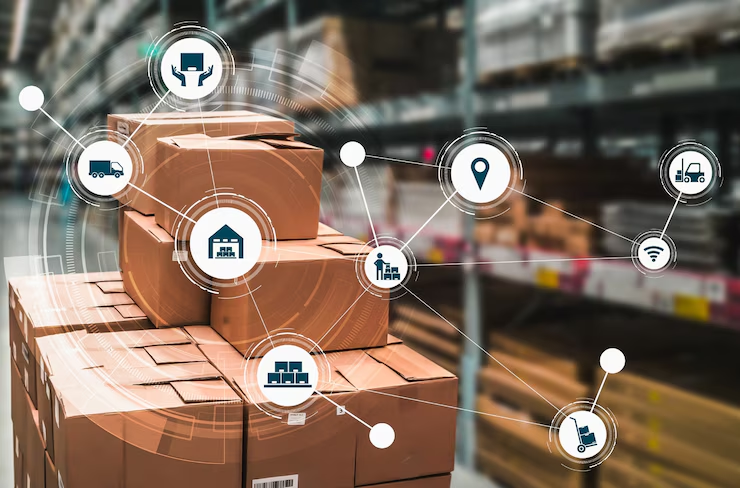How to reduce transportation costs in 2025 | 9 Proven Strategies
In today’s rapidly evolving logistics landscape, transportation costs are soaring—driven by record-high fuel prices, labor shortages, and rising customer expectations for faster, more reliable deliveries. According to a 2024 Gartner report, transportation can account for up to 60% of total logistics expenses, putting immense pressure on logistics leaders to find innovative ways to boost efficiency and protect profit margins. The good news? With the right strategies and technologies, logistics companies can significantly reduce transportation costs while maintaining service excellence.
Here are nine proven, actionable tips to help logistics companies minimize expenses and enhance operational performance:
1. Implement Route Optimization Strategies
Inefficient routing is a silent profit killer. Studies show that route optimization can reduce fuel and labor costs by up to 20%. Leveraging advanced route planning software enables companies to analyze delivery locations, traffic patterns, vehicle capacity, and time windows—generating the most efficient routes. For example, a Bengaluru-based delivery company using such tools can cut travel distances and drive times, directly reducing fuel and wage expenses.
2. Invest in an Advanced Transport Management System (TMS)
A robust TMS acts as the command center for all transportation activities—streamlining dispatch, tracking, invoicing, and reporting. According to Logistics Management, companies using TMS solutions report up to 15% lower administrative costs and improved shipment visibility. For specialized sectors, such as chemical logistics, a TMS also ensures regulatory compliance and real-time monitoring of sensitive shipments.
3. Leverage Truck Dispatch Software
Real-time communication between dispatchers and drivers is crucial for minimizing delays and maximizing fleet utilization. Truck dispatch software optimizes assignments, provides live route updates, and allows for on-the-fly adjustments. Large retail fleets using dispatch solutions have reported up to 30% improvement in on-time delivery rates and significant reductions in idle time.
4. Optimize Load Planning and Consolidation
Running half-empty trucks is a costly mistake. Effective load planning and shipment consolidation maximize vehicle capacity and minimize the number of trips. According to the Council of Supply Chain Management Professionals, optimizing load factors can reduce per-shipment costs by up to 25%. E-commerce companies, for instance, can consolidate orders headed to the same region, slashing fuel, toll, and labor expenses.
5. Maximize First-Time Delivery Success
Failed deliveries are expensive and disruptive. Offering customers delivery window selection, real-time tracking, and proactive notifications can boost first-time delivery rates—reducing costly re-delivery attempts and improving customer satisfaction.
6. Focus on Fuel Efficiency
Fuel is often the single largest operating expense for logistics companies. Improving fuel efficiency can yield substantial savings:
-
Driver Training: Teaching fuel-efficient driving techniques can cut fuel consumption by up to 13%.
-
Vehicle Maintenance: Regular checks on tires, oil, and engines ensure optimal performance.
-
Aerodynamic Improvements: Truck modifications can improve fuel economy significantly.
7. Fuel Monitoring for Cost Control and Security
Accurate fuel monitoring not only improves cost efficiency but also guards against theft. By tracking fuel usage, companies can pinpoint inefficiencies, reduce wastage, and detect anomalies.
8. Cross-Docking for Faster, Cheaper Deliveries
Cross-docking eliminates the need for storage by transferring products directly from inbound to outbound trucks. This approach reduces warehousing costs, labor, and accelerates delivery times—helping companies respond faster to market demands.
9. Negotiate Better Rates with Carriers
For businesses using third-party carriers, regularly reviewing and negotiating contracts is essential. Increased shipping volumes can be leveraged for better rates. According to GoComet, companies renegotiating contracts annually save an average of 8-12% on shipping costs.
10. Invest in Transport Software for Data-Driven Decisions
Comprehensive transport software with robust analytics helps track KPIs like cost per mile, vehicle utilization, and on-time deliveries. Data-driven insights reveal inefficiencies—enabling targeted improvements that directly impact the bottom line.
Conclusion
In a market where every penny counts, logistics companies must embrace innovation and technology to stay competitive. By implementing these nine proven strategies—from route optimization and TMS adoption to data-driven decision-making—businesses can reduce transportation costs by up to 30%, improve operational agility, and deliver superior customer experiences. The future belongs to logistics leaders who act decisively, leverage actionable insights, and continually adapt to the changing landscape.
Ready to transform your logistics operations? Start implementing these strategies today and watch your transportation costs drop while your efficiency—and customer satisfaction—soar.


